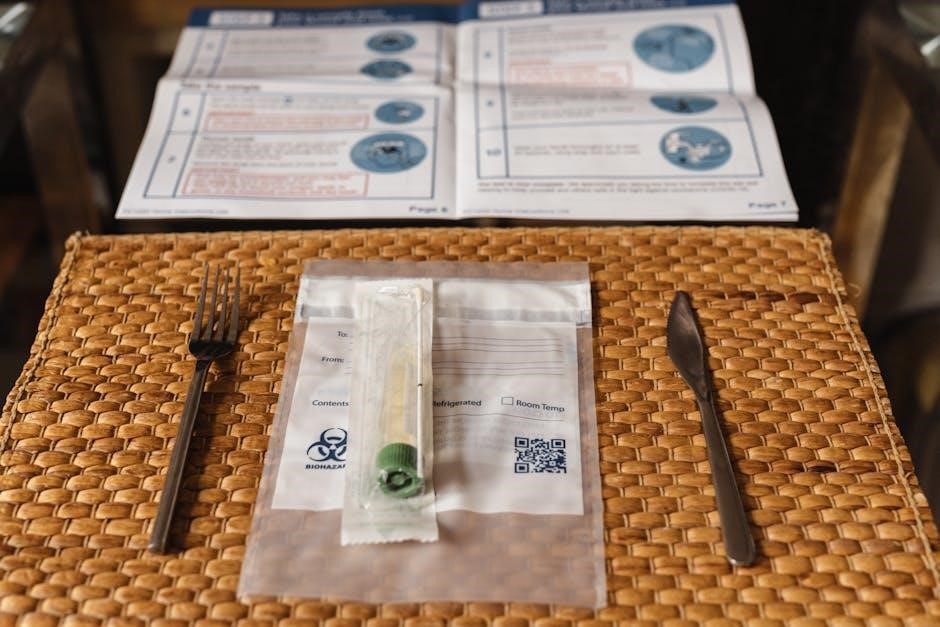L5P Delete Instructions: A Comprehensive Guide
This guide provides a comprehensive overview of L5P deletes, a common modification for Duramax diesel engines․ It’s essential to understand the implications before proceeding․ Deleting emissions components can impact performance, reliability, and legality․ Let’s explore the process, components, and considerations involved in an L5P delete․
The L5P Duramax engine, found in Chevrolet and GMC trucks from 2017 onwards, incorporates advanced emissions control systems to meet stringent environmental regulations․ These systems, including the Diesel Particulate Filter (DPF), Exhaust Gas Recirculation (EGR), and Selective Catalytic Reduction (SCR) with Diesel Exhaust Fluid (DEF), can sometimes present operational challenges and maintenance concerns for owners․ An “L5P delete” refers to the removal or disabling of these emissions control components․
The practice involves physically removing parts like the DPF and EGR cooler, as well as reprogramming the engine control module (ECM) to prevent error codes and ensure proper engine function without the emissions systems․ The intention behind an L5P delete often stems from a desire to improve performance, fuel economy, and reduce the frequency of maintenance associated with the emissions equipment․ However, it’s crucial to understand that modifying or removing emissions control devices can have significant legal and environmental implications․ It is also worth noting that this modification may only be legal in Canada, except for Ontario․
Reasons for Considering an L5P Delete
Several factors might lead an L5P Duramax owner to consider deleting their emissions systems․ One primary reason is the potential for improved performance․ Emissions control devices can restrict exhaust flow, thereby limiting engine power and responsiveness․ Removing these restrictions can unlock hidden horsepower and torque, particularly beneficial for towing or performance applications․
Another common motivator is the desire to enhance fuel economy․ The regeneration process of the DPF, for instance, consumes extra fuel to burn off accumulated particulate matter․ Eliminating this process, along with other emissions-related functions, can lead to noticeable gains in MPG․ Furthermore, L5P deletes are sometimes pursued to reduce maintenance costs․ Repairs to emissions components, such as the DEF tank heater or EGR cooler, can be expensive and time-consuming․ By removing these parts, owners hope to avoid future breakdowns and associated expenses․ Finally, some owners feel that deleting the emissions controls can lead to increased longevity of the engine, by preventing oil dilution and cylinder damage․
Components Typically Deleted in an L5P System

When undertaking an L5P delete, several key components of the emissions control system are typically removed․ These include the Diesel Particulate Filter (DPF), which traps soot and particulate matter from the exhaust․ The Exhaust Gas Recirculation (EGR) system, designed to reduce NOx emissions by recirculating exhaust gases back into the engine, is also frequently removed․ The Diesel Exhaust Fluid (DEF) system, also known as Selective Catalytic Reduction (SCR), which injects DEF into the exhaust stream to neutralize NOx, is another component commonly deleted․
In addition to these primary systems, related sensors and control modules may also be removed or bypassed․ This can include oxygen sensors, NOx sensors, and the ECM programming that manages these systems․ The physical removal of these components is usually accompanied by software modifications to the engine control module (ECM), which are necessary to prevent error codes and ensure proper engine operation․ The Y-bridge may also need attention to prevent coolant leaks․
L5P Delete Kits: What They Include
L5P delete kits are comprehensive packages designed to facilitate the removal of emissions control components from 2017-2023 Duramax engines․ A typical kit includes several essential parts․ These kits often contain a DPF (Diesel Particulate Filter) delete pipe, which replaces the factory DPF to allow for unrestricted exhaust flow․ An EGR (Exhaust Gas Recirculation) delete kit is usually included, consisting of block-off plates and bypass hoses to prevent exhaust recirculation․
Furthermore, DEF (Diesel Exhaust Fluid) delete components are provided to disable the SCR (Selective Catalytic Reduction) system, often including DEF tank removal parts or bypass modules․ To ensure proper fitment and prevent coolant leaks, OEM coolant connection components are often included․ These kits also provide the necessary hardware, such as bolts, gaskets, and clamps, for a seamless installation․
Finally, a crucial component of any L5P delete kit is the ECM tuning software, which reprograms the engine control module (ECM) to account for the deleted emissions systems and optimize engine performance․
Installation Process Overview

The L5P delete installation process is a complex undertaking that requires mechanical expertise and a thorough understanding of the vehicle’s systems․ The process begins with disconnecting the battery and accessing the DPF, EGR, and DEF systems․ The factory DPF is removed and replaced with the DPF delete pipe, ensuring proper alignment and secure connections․
Next, the EGR system is addressed by installing block-off plates to seal off exhaust ports and prevent recirculation․ The EGR cooler and associated components are often removed to further streamline the engine bay․ The DEF system is then disabled by removing the DEF tank or installing a bypass module, depending on the kit’s design․
The ECM must be reprogrammed with the provided tuning software․ This step requires connecting a tuning device to the vehicle’s OBD-II port and following the software’s instructions to upload the delete tune․ After installation, it’s crucial to inspect all connections for leaks and ensure that all components are properly secured․
Tuning and ECM Considerations

When performing an L5P delete, tuning and ECM (Engine Control Module) considerations are paramount․ The ECM is the vehicle’s central computer, controlling various engine functions․ Deleting emissions components necessitates reprogramming the ECM to prevent error codes and optimize performance․ This is achieved through custom tuning, which involves flashing a new software map onto the ECM․
Delete tunes are specifically designed to account for the absence of the DPF, EGR, and DEF systems․ They recalibrate fuel delivery, timing, and other parameters to maximize power and efficiency․ Selecting a reputable tuner with experience in L5P delete tuning is crucial for ensuring optimal results and avoiding potential engine damage․
Some delete kits include pre-programmed ECMs, while others require the use of a tuning device to flash the factory ECM․ The tuning process typically involves connecting the device to the OBD-II port and following the software’s instructions․

Potential Benefits of Deleting an L5P
Deleting the L5P engine’s emissions control systems, such as the Diesel Particulate Filter (DPF), Exhaust Gas Recirculation (EGR), and Diesel Exhaust Fluid (DEF) systems, can offer several potential benefits for some owners․ One primary advantage is the potential for improved fuel economy․ By removing restrictions in the exhaust system and optimizing engine tuning, some drivers report an increase in miles per gallon․
Another often-cited benefit is enhanced engine performance․ Deleting the emissions systems can lead to increased horsepower and torque, resulting in improved acceleration and towing capabilities․ The removal of the DPF can also reduce backpressure, allowing the engine to breathe more freely․
Furthermore, deleting the L5P can potentially decrease maintenance costs․ The DPF, EGR, and DEF systems are known to be prone to issues, and their removal eliminates the need for costly repairs or replacements․ This can be particularly appealing to owners who experience frequent problems with these components․
Legal and Environmental Considerations
Deleting emissions control systems from an L5P Duramax engine carries significant legal and environmental implications that must be carefully considered․ In many regions, including the United States and Canada, it is illegal to tamper with or remove any emissions control devices mandated by federal or local regulations․ Violators may face substantial fines and penalties, both for individuals and businesses involved in the sale or installation of delete kits․
From an environmental standpoint, removing emissions equipment can lead to a significant increase in harmful pollutants released into the atmosphere․ The DPF, EGR, and DEF systems are designed to reduce particulate matter, nitrogen oxides (NOx), and other emissions that contribute to air pollution and respiratory problems․ Deleting these systems can have a detrimental impact on air quality and public health․
Furthermore, deleting emissions equipment may void the vehicle’s warranty and could affect its resale value․ Potential buyers may be wary of purchasing a modified vehicle due to legal concerns and potential maintenance issues․ It is essential to weigh the potential benefits against the legal and environmental consequences before considering an L5P delete․
Alternatives to Deleting
Before considering an L5P delete, it’s crucial to explore alternative solutions for addressing common issues with the emissions systems․ Instead of completely removing the DPF, EGR, and DEF systems, explore options to enhance their performance and reliability․ Regular maintenance, such as cleaning or replacing filters, can help prevent issues and prolong the lifespan of these components․
Another alternative is to consider performance upgrades that work within the confines of the existing emissions systems․ Upgraded turbochargers, injectors, and tuning can improve engine performance without compromising emissions compliance․ These modifications can provide a noticeable boost in power and fuel efficiency while remaining within legal and environmental standards․
Additionally, addressing underlying mechanical issues that may be contributing to emissions problems can be a more sustainable solution․ Issues with faulty sensors, leaks, or worn-out components can negatively impact the performance of the emissions systems․ By diagnosing and repairing these issues, you can improve the overall health of your engine and reduce the need for drastic measures like deleting․

